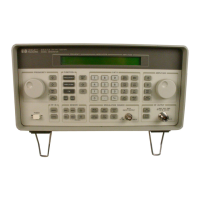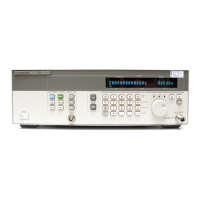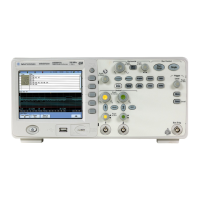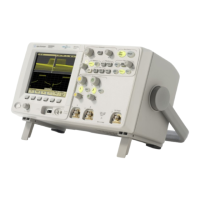131
S:\Hp8960\E1962B CDMA 2000\Pi Release\Reference Guide\Chapters\cdma2000_prog_generic_step4_ac.fm
Step 4: Make Connection
• Call-Connected-State Query
The CALL:CONN? query allows the control program to determine if a call is in the connected state or in the
idle state.
If the call is in one of the transitory states, the query waits until the call reaches the idle state or connected
state before returning a value.
• Call-State-Change Detector Arm Command
The test set has a call-state-change detector which can be used to temporarily hold the response to a
CALL:CONN? query until the call state has moved from idle to connected or vice versa.
Without the call-state-change detector, the CALL:CONN? query only hangs if the call is in a transitory
state. Otherwise, it immediately returns a 1 or 0. Therefore, if a call connection process is started and the
CALL:CONN? query is sent before the call state has transitioned from idle to one of the transitory states,
the query immediately returns a 0. This indicates that the call is in the idle state (and therefore that the
connection attempt failed). In reality, the call likely connected, but not until after the CALL:CONN? query
immediately returned a 0.
When the call-state-change detector is armed during a connection attempt, if the CALL:CONN? query is
sent while the call state is still idle, the query waits until the state changes to connected, and then returns
a 1.
The CALL:CONNected:ARM[:IMMediate] command is used to arm this call-state-change detector.
• Call-State-Change Detector Timeout Command
If the call-state-change detector is armed and a call connection is attempted but the call state never
changes from the idle state, the CALL:CONN? query hangs the bus. This easily happens if the mobile is
badly broken, the mobile is not connected to the test set, or no one pushes the send button on the mobile.
The CALL:CONNected:TIMeout command is used to set the timeout value for the call-state-change
detector.
The timeout timer is started whenever the call-state-change detector is armed, and should be set to the
maximum amount of time the control program should wait between arming the detector and the beginning
of the connection process (when the call state moves from the idle state). If the timer expires before the call
state has moved from the idle or connected state, the call-state-change detector is disarmed, which releases
the CALL:CONN? query if it is currently hanging.
Responses Returned by the CALL:CONN? Query
Response Meaning
1 The call is in the connected state.
0 The call is in the idle state.

